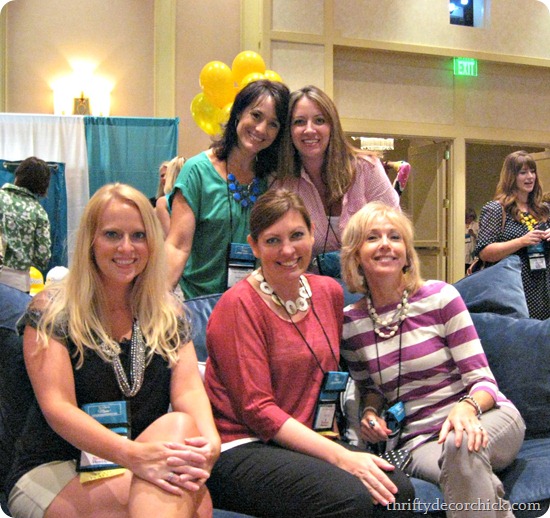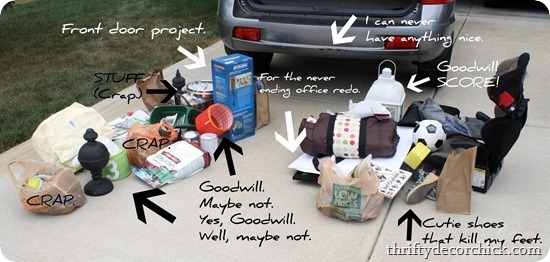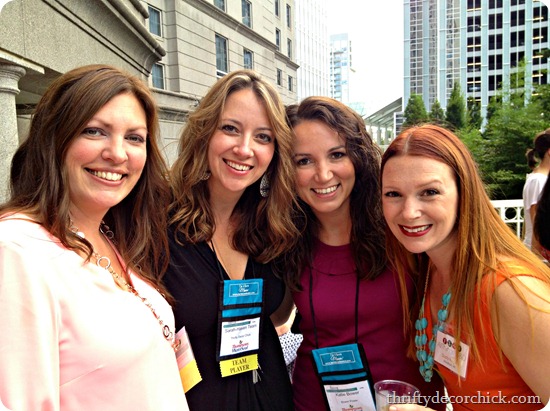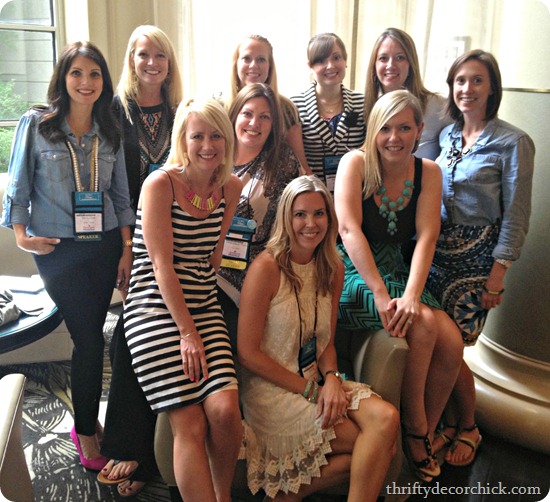Sabtu, 24 Agustus 2013
India Needs More Science Museums: Reflections on a Recent Visit to Hong Kong Science Museum
Rabu, 21 Agustus 2013
Here, there and everywhere: Google Keep reminds you at the right time
To get started, select the “Remind me” button from the bottom of any note and choose the type of reminder you want to add. You can add time-based reminders for a specific date and time, or a more general time of day, like tomorrow morning. Adding a location reminder is incredibly easy too—as soon as you start typing Google Keep suggests places nearby.
And finally, we've made it easier to add your existing photos to a Google Keep note on Android. When you tap the camera icon you can choose between taking a new photo or adding one you already have from Gallery.
The new update is gradually rolling out in Google Play, and available now on the web at http://drive.google.com/keep and in the Chrome App.
Posted by Erin Rosenthal, Product Manager
Sabtu, 17 Agustus 2013
Bhagwati and Panagariya miss out on scope of innovation to address social challenges
Sabtu, 10 Agustus 2013
Wisdom from Raghu Rajan
Read more at http://www.project-syndicate.org/commentary/the-declining-quality-of-public-economic-debate-by-raghuram-rajan#Xlo2wzGUe2FcbYDZ.99
Jumat, 09 Agustus 2013
Applying "8 Steps to Innovation" Framework to Start-ups
Get ready for college with textbooks on Google Play
Rolling out this week, you can now rent or purchase digital textbooks from the Books section on Google Play. We have a long list of publishing partners, and we’re launching with a comprehensive selection of higher education titles from science and mathematics to history and English, and everything in between.
All your textbooks, anywhere you go
With digital textbooks, there’s no need to worry about which ones you have with you and which ones you left in your dorm room. Because your library is stored in the cloud, you have instant access to the titles you need—when you need them—on your Android tablet, phone, iOS device and on the web. Now an overstuffed backpack is a thing of the past with all your textbooks weighing as much as the device you’re reading them on.
Take great notes, stay organized
With the Google Play Books app, you have convenient tools at hand to make studying simpler and faster. You can instantly search within a textbook for a particular word or phrase, bookmark chapters and pages, highlight and annotate key passages and get quick access to dictionaries, translation tools, Wikipedia and Google search.
Rent and save
Need your textbooks for just a semester or two? You can rent any textbook on Google Play for six months and save up to 80% as compared to buying print textbooks.
Shop for textbooks today on Google Play, and learn more at our Google in Education site.
Posted by Scott Dougall, Director, Product Management
Rabu, 07 Agustus 2013
Selasa, 06 Agustus 2013
Senin, 05 Agustus 2013
Best week ever!
Good Monday to you all! Wow, it’s been a total whirlwind of a week! I’m not sure I’ve ever packed more into seven days in my life.
Bear with me as I share a little bit of it with you today – it’s been an wonderful, overwhelming, lovely week and it really couldn’t have gone much better!
First up – Haven 2013! For those of you who don’t know, Haven is a conference dedicated to DIY and decor bloggers specifically. It’s the first of it’s kind because we (the team) knew there was a need for it – and a few years ago we decided it was time to make it happen!
This was our second year and it was even better than the first!:
This is about half the group – all together we had about 450 attendees (that includes sponsors) so it was much bigger than last year. I’m not sure we’ll go too much bigger because we love the feel of this size – we still want everyone to feel like they have a chance to meet most everyone.
It was just a great week, really. We were just so happy with how it all turned out and are all so thrilled and humbled by it all! There was a lot of learning – I have a HUGE to do list written down – but most of all it’s just so amazing to hang out with people who totally get what you do.
We goofed around plenty:
It’s hard not to with these ladies. I laughed, a LOT. ;)
But most of all, like always, I walked away having learned so much from just chatting with other bloggers throughout the week. I was so happy to see old friends:
And meet plenty of new ones, even though I’ve “known” them for years:
As always, I didn’t get nearly enough pictures. I know took one with many of you and I’d love a copy! (Or we have a 2013 Flickr account going, so you can load them there!)
It was an honor to have been a part of it again this year and to work with some amazing women: 
Our event planner, Kristin, isn’t in that pic but she is a rock star – there is NO way we could do this without her.
Next year’s conference is already booked for July in Atlanta! We’ll share details soon. :)
So I got home from the conference, slept for a few hours and then moved on to the next adventure…the NKOTB concert:
I know I’m a little teensy bit biased, but DANG, they put on a great show! I was exhausted just from attending.
This time they were joined by Boys to Men (they were fantastic!) and 98 Degrees and the place was packed!:
It is absolutely electric. And LOUD. Grown women can SCREAM.
My hubby’s cousin hooked us up with some incredible seats – six rows off the floor:
We had one of the best views there! Excuse my Farah hair by the way. I’m bringing the 70’s back. Apparently.
Yet again, I came home, got a few hours of sleep and then this morning we were up bright and early for a very special appointment.
Today we learned we’ll soon have a grandson. :) Yes, I’m going to be a grandma – my stepdaughter (23) is due in December and we found out this morning it’s a boy. It was very emotional and sweet and they had a room full of family and friends there to find out the big news. Our son is THRILLED. :)
We are just so happy she and the baby are healthy and doing well. I haven’t mentioned it yet just because I kind of feel like this is their story to tell, not mine. I will of course share more as we get closer to the due date and will most likely share a few pics over time, but I want to respect their privacy and desires too.
I can’t wait to meet this sweet boy!!
So, yes, I think I will set some kind of record as the youngest grandma ever. Especially being 27 and all. Or something.
Well…there’s my week in a nutshell. See, a little crazy huh? But every bit of it makes me so incredibly thankful – I am so grateful for this life I live. I am a lucky woman. A lucky woman who is off to take a nap for six hours or so. ;)
Close Reading Resource Update
In a previous post titled "Freebie! Close Reading Materials"I shared the original version of my close reading product. It included printable charts for text coding strategies, a question cube template, and task cards for reading literature as well as informational text. Since then, I have continued to expand the product as I have accessed additional resources that I would like to use in my own classroom. I have recently updated the product to reflect a few revisions. The new product now contains the following items:
- a colorful, visually-appealing poster that defines Close Reading based upon an acronym for "CLOSE"
- a black-and-white poster that defines Close Reading based upon an acronym for "CLOSE"
- a colorful, visually-appealing poster that outlines the process for multiple readings of a text, as well as the Common Core standards that align to each level of questioning
- a black-and-white poster that outlines the process for multiple readings of a text, as well as the Common Core standards that align to each level of questioning.
Minggu, 04 Agustus 2013
Dreze and Sen Script a Challenge Book for India
Sabtu, 03 Agustus 2013
Obamacare versus the Faculty
I have been teaching multiple sections of economics for four years now at several Colleges and Universities in the State of Indiana. I have also been a frequent user of your texts in the classes that I teach.
With the implementation of the ACA (Affordable Care Act) these institutions are giving notification to their part-time faulty that their individual teaching schedules will now be limited to three sections. At the college this will likely result in the cancellation of 20-25% of the class sections in economics, and I would assume other areas will have a similar result. The students are not fully aware of the situation and many will be surprised that their desire to get a college education is now being impacted by the need to avoid the full implementation of the ACA.
Regardless if you are a Republican or a Democrat I would hope full-time faculty would voice their concern regarding the impact the implementation of the ACA could have on the attainment of higher education for the current student population and upon the lives of the dedicated part-time faculty that have been devoted to serving this student population.
My hope is that if faculty across the nation brought this to the public attention that we as a nation could have a more open and complete dialogue regarding the course we wish to set as a nation.
Giveaway Winner!
Ec 10 Bleg
Steve Ballmer
Ben Bernanke
Lloyd Blankfein
Ryan Fitzpatrick
Jeremy Lin
Sheryl Sandberg
Eduardo Saverin
Chuck Schumer
Cameron Winklevoss
Tyler Winklevoss
Mark Zuckerberg
If you attended Harvard and have a famous classmate who you are sure took ec 10 (or its predecessor ec 1), please email me the information.
Jumat, 02 Agustus 2013
July in review and no-spend August
Hello everybody, happy Friday to you! I hope you’ve had a great week – I’m still at the Haven Conference and having a blast! Well…I hope I am anyway. I wrote this before I left. ;)
I’ll be back next week with some more DIY, but for now I’m reviewing the big posts from July and I have a fun little announcement at the end that I’m getting excited about. :)
First up last month I shared how I tackled my first true floating shelves:
These are great storage for some of the Bub’s Lego sets – I love having them on display but these also get them out of the way.
Next I shared the details on the powder room redo:
I covered the sources and details for everything in the room, so if you had questions on anything it should be answered there!
I did a little organizing (and prettifying) in the dining room – those skinny little cabinets hold a TON of stuff:
I’m so glad I decided to incorporate that closed storage in the built ins!
I shared more about our latest RV trip and the little cabin in the woods that we stayed in:
Many of you asked the name of the cabins/RV park and it’s called Neshonoc Lakeside in LaCrosse Wisconsin. :)
Next up I showed you a FUN new DIY product – painters tape that comes in shapes!:
This is the first chevron in our house and it may be the last. We’ll see – I’m still not hooked. I do like this little touch of it though. It’s staying for awhile at least!
Next up I hope to use the wave version of the shape tape. ;)
I shared my plan for our mud room redo in this post, including some lovely inspiration pics:
Drool.
I was busy working on our master bedroom in July and I shared more about our new bed here and the how-to on the tufted headboard here:
I’ve made a few more changes in there since and I’m SO pleased with how the room is coming together! Our bed is still my favorite part. ;)
Last week I shared the ways I deal when cash is low. I’ve learned over the years it’s a horrible feeling and I’ve always had a few tried and true methods to keep my spirits up:
 I loved your thoughts too – there were some great ideas in the comments!
I loved your thoughts too – there were some great ideas in the comments!
This week I shared how I’m not killing my hydrangeas anymore: 
I’ve made a concentrated effort to learn more about them and it’s paid off!
So I’m excited about August! This month I’ve decided to do another “no spend” month. I first did this a couple summers ago and actually quite enjoyed it! I have so many projects that need to be finished up, so many spots that need decluttering, and I just enjoy trying to work with what we already have.
So this month I won’t spend any cash on DIY or decorating projects. I have one that we’ve scheduled that will probably happen, more on that later. But otherwise I hope to stick to only what we’ve got! I hope you’ll be inspired!
Take care all and have a great weekend! :)
*P.S. As soon as I get back from Haven we head out for the NKOTB concert.
AWW. yeah.
Can’t wait!!
Preserving Memories: Better Late than Never!
Kamis, 01 Agustus 2013
Spelling Fun Freebie!
Check out a preview:









































